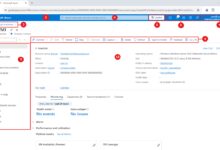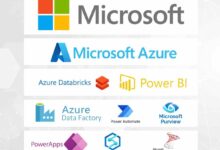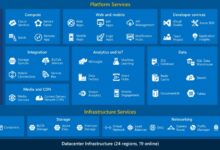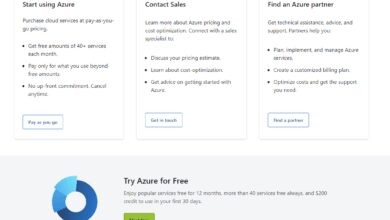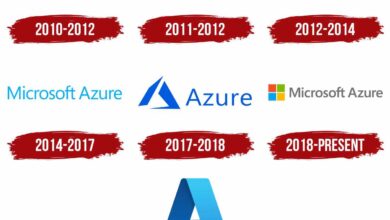Azure Portal: 7 Powerful Features You Must Master Today
Welcome to the ultimate guide on the Azure Portal — your gateway to managing Microsoft’s cloud ecosystem with ease, precision, and power. Whether you’re a beginner or a seasoned cloud architect, this guide will walk you through everything you need to know to master the platform efficiently.
What Is the Azure Portal?

The Azure Portal is Microsoft’s web-based interface for managing cloud services, resources, and infrastructure across the Azure platform. It provides a centralized dashboard where users can deploy, monitor, and manage everything from virtual machines to AI models, all through an intuitive graphical user interface (GUI).
Definition and Core Purpose
The Azure Portal acts as the control center for Azure services. It allows users to interact with cloud resources without needing deep command-line expertise. From creating a simple storage account to orchestrating complex hybrid cloud environments, the portal simplifies cloud management.
- It serves as a unified interface for all Azure services.
- Designed for developers, IT professionals, and enterprise administrators.
- Accessible from any modern web browser via portal.azure.com.
How It Fits Into the Microsoft Cloud Ecosystem
The Azure Portal doesn’t exist in isolation. It integrates seamlessly with other Microsoft tools like Azure Active Directory, Microsoft 365, Power Platform, and Azure DevOps. This interconnectedness allows organizations to build end-to-end solutions that span identity, security, development, and operations.
“The Azure Portal is the front door to the cloud — where strategy meets execution.” — Microsoft Cloud Architect, 2023
Key Features of the Azure Portal
The Azure Portal stands out due to its rich set of features designed to enhance productivity, security, and scalability. Let’s explore the most impactful ones that make it a powerful tool for cloud management.
Dashboard and Customization Options
One of the first things users notice when logging into the Azure Portal is the customizable dashboard. This feature allows you to pin frequently used resources, create personalized views, and organize widgets for real-time monitoring.
- You can create multiple dashboards for different teams (e.g., DevOps, Security, Finance).
- Drag-and-drop interface makes layout customization intuitive.
- Supports role-based dashboards, showing only relevant data to specific users.
Resource Management and Deployment
The portal enables users to deploy and manage resources using templates, the Azure Marketplace, or manual creation. Whether you’re spinning up a virtual machine or deploying a Kubernetes cluster, the process is streamlined through guided workflows.
- Use ARM templates (Azure Resource Manager) for infrastructure-as-code deployments.
- Leverage Quick Start templates from the Azure community via Azure Quickstart Templates.
- Deploy pre-configured solutions from the Azure Marketplace with just a few clicks.
Monitoring and Diagnostics with Azure Monitor
Visibility is key in cloud environments. The Azure Portal integrates deeply with Azure Monitor, providing logs, metrics, alerts, and application insights in one place.
- Set up alert rules based on CPU usage, network traffic, or custom metrics.
- Use Log Analytics to query and visualize log data.
- Monitor application performance with Application Insights directly from the portal.
Navigating the Azure Portal Interface
Understanding the layout and navigation of the Azure Portal is essential for efficient use. The interface is clean, responsive, and designed with usability in mind, but it can be overwhelming for new users.
Main Menu and Navigation Pane
The left-hand navigation pane is the backbone of the Azure Portal. It contains links to all major services, resource groups, and management tools.
- Top items include Dashboard, Resource groups, Virtual machines, and Storage accounts.
- Users can collapse or pin the menu for better screen utilization.
- Search bar at the top allows instant access to any service or setting.
Understanding Blades and Contextual Panels
In the Azure Portal, when you open a resource or service, it appears in a blade — a sliding panel that overlays the main screen. This design keeps users oriented within the hierarchy of resources.
- Blades can be resized, closed, or reordered.
- They provide contextual actions like Start, Stop, Restart, or Delete.
- Deep linking allows sharing direct URLs to specific blades for collaboration.
Using the Global Search and Filters
The global search bar is one of the most underutilized yet powerful tools in the Azure Portal. It indexes all resources, services, documentation, and settings.
- Type keywords like ‘VM’, ‘network’, or ‘cost’ to quickly find relevant services.
- Filters help narrow results by subscription, region, or resource type.
- Search history is retained for faster access to recent queries.
Managing Subscriptions and Access Control
Effective management of subscriptions and access rights is crucial for security and cost control. The Azure Portal provides robust tools for organizing and securing your cloud environment.
Subscription Management Overview
Azure subscriptions are the top-level containers for resources. They define billing, quotas, and administrative boundaries.
- Users can manage multiple subscriptions from a single portal instance.
- Switch between subscriptions using the subscription filter at the top.
- View usage and billing data directly in the Cost Management + Billing section.
Role-Based Access Control (RBAC)
RBAC allows fine-grained control over who can do what within your Azure environment. It’s a cornerstone of secure cloud governance.
- Built-in roles include Owner, Contributor, and Reader.
- Custom roles can be created for specialized permissions.
- Assign roles at the subscription, resource group, or individual resource level.
Managing Users and Groups via Azure AD Integration
The Azure Portal integrates tightly with Azure Active Directory (Azure AD), enabling centralized identity management.
- Add users, assign licenses, and manage group memberships directly from the portal.
- Enable Multi-Factor Authentication (MFA) for enhanced security.
- Use Conditional Access policies to enforce access rules based on device, location, or risk level.
Deploying and Managing Resources in Azure Portal
One of the primary functions of the Azure Portal is deploying and managing cloud resources. This section dives into how to create, configure, and maintain various types of resources efficiently.
Creating Virtual Machines (VMs)
Virtual Machines are among the most commonly deployed resources in Azure. The portal provides a step-by-step wizard to configure VMs with minimal friction.
- Select OS (Windows, Linux), size, region, and networking options.
- Enable auto-shutdown, monitoring, and backup during creation.
- Use Just-in-Time VM access for improved security.
Setting Up Storage Accounts
Storage accounts are essential for storing data like blobs, files, queues, and tables. The Azure Portal simplifies their creation and management.
- Choose performance tier (Standard or Premium) and redundancy (LRS, GRS, ZRS).
- Configure access keys, shared access signatures (SAS), and firewall rules.
- Monitor storage usage and set up lifecycle management policies.
Configuring Virtual Networks and Security Groups
Networking is the backbone of any cloud deployment. The Azure Portal offers comprehensive tools for setting up virtual networks (VNet), subnets, and network security groups (NSG).
- Create VNets with custom IP ranges and DNS settings.
- Define NSG rules to control inbound and outbound traffic.
- Use Network Watcher to troubleshoot connectivity issues.
Monitoring, Logging, and Cost Optimization
Visibility and cost control are critical in cloud environments. The Azure Portal provides integrated tools to monitor performance, analyze logs, and optimize spending.
Using Azure Monitor and Log Analytics
Azure Monitor collects telemetry from all your resources, while Log Analytics allows deep querying of log data.
- Create custom dashboards with key performance indicators (KPIs).
- Set up alert rules based on log queries or metric thresholds.
- Use Workbooks to build interactive reports combining metrics, logs, and visualizations.
Setting Up Alerts and Notifications
Proactive monitoring helps prevent downtime and performance degradation.
- Configure alerts for CPU, memory, disk, or network usage.
- Send notifications via email, SMS, webhooks, or Azure Functions.
- Use Action Groups to define reusable notification workflows.
Cost Management and Budgeting Tools
Uncontrolled cloud spending is a common challenge. The Azure Portal includes powerful cost management features to keep budgets in check.
- View detailed cost analysis by service, region, or tag.
- Set monthly budgets with alert thresholds.
- Identify idle or underutilized resources using Cost Recommendations.
Security and Compliance in the Azure Portal
Security is not an afterthought in Azure — it’s built into every layer. The portal provides tools to assess, enforce, and report on security and compliance posture.
Azure Security Center (Now Part of Microsoft Defender for Cloud)
Microsoft Defender for Cloud (formerly Azure Security Center) offers unified security management and advanced threat protection.
- Provides a security score to measure your environment’s health.
- Recommends actions to harden VMs, databases, and networks.
- Integrates with third-party tools like firewalls and SIEMs.
Data Protection and Encryption Options
Data security is paramount. The Azure Portal enables encryption at rest and in transit across all major services.
- Enable Customer-Managed Keys (CMK) for greater control over encryption.
- Use Azure Disk Encryption for VMs.
- Leverage Azure Key Vault to manage secrets, keys, and certificates.
Compliance Management and Audit Logs
Azure meets a broad range of compliance standards (GDPR, HIPAA, ISO, etc.). The portal helps you stay compliant through audit logs and compliance dashboards.
- Access Azure Activity Log to track administrative changes.
- Export logs to storage or SIEM tools for long-term retention.
- View compliance status across services in the Regulatory Compliance dashboard.
Advanced Tips and Best Practices for Azure Portal Users
Even experienced users can benefit from advanced techniques and best practices that improve efficiency, security, and reliability.
Using Tags for Resource Organization
Tags are key-value pairs that help organize and manage resources across subscriptions.
- Use tags for cost allocation (e.g., Department=Finance, Project=CRM).
- Automate tagging using Azure Policy.
- Filter and group resources by tags in the portal and cost reports.
Leveraging Azure Policy for Governance
Azure Policy helps enforce organizational standards and assess compliance at scale.
- Use built-in policies like ‘Allowed Locations’ or ‘Enforce SSL’.
- Create custom policies to meet internal requirements.
- View policy compliance in the portal dashboard.
Automation with Azure CLI and PowerShell from the Portal
The Azure Portal includes a built-in Cloud Shell that allows users to run Azure CLI or PowerShell commands directly in the browser.
- No installation required — Cloud Shell is persistent and browser-based.
- Generate CLI/PowerShell scripts from portal actions using the ‘Export Template’ or ‘Automation Options’.
- Combine GUI and command-line workflows for maximum flexibility.
What is the Azure Portal used for?
The Azure Portal is used to manage all aspects of Microsoft Azure cloud services, including deploying virtual machines, managing storage, configuring networks, monitoring performance, controlling access, and optimizing costs — all through a web-based interface.
Is the Azure Portal free to use?
Yes, access to the Azure Portal itself is free. However, the resources you create and manage within it (like VMs, storage, and bandwidth) incur charges based on usage. You can use the Azure Free Account to explore many services at no cost for 12 months.
How do I secure my Azure Portal environment?
Secure your Azure Portal by enabling Multi-Factor Authentication (MFA), using Role-Based Access Control (RBAC), applying Azure Policies, monitoring activity logs, and leveraging Microsoft Defender for Cloud to identify and remediate vulnerabilities.
Can I automate tasks in the Azure Portal?
Yes, automation is a core capability. You can use Azure Automation, Logic Apps, or the Cloud Shell with Azure CLI/PowerShell to automate repetitive tasks. The portal also provides ‘Automation Options’ to generate scripts for manual actions.
What is the difference between Azure Portal and Azure CLI?
The Azure Portal is a graphical user interface (GUI) for managing Azure resources, while Azure CLI is a command-line tool. The portal is ideal for beginners and visual management, while CLI is better for scripting, automation, and DevOps workflows.
Mastering the Azure Portal is essential for anyone working with Microsoft’s cloud platform. From intuitive dashboards to powerful security and cost management tools, it offers everything you need to build, monitor, and govern cloud environments effectively. By leveraging its full capabilities — from RBAC and tagging to automation and compliance — you can unlock the true potential of Azure. Whether you’re just starting out or looking to refine your skills, this guide provides the foundation for success in the cloud.
Recommended for you 👇
Further Reading:
